Well, unless I am mistaken (and a member of the team like The Persian Cataphract can likely comment on this better than I can), the Dahae Noble Cavalry unit is pretty much a hypothetical unit, simply because we have no direct evidence for what Daha heavy cavalrymen looked like toward the beginning of the EB timeframe. They are actually not armoured in the Saka style - they wear a lamellar cuirass with Greek-style shoulder yokes and have their legs armoured with parapleuridia, which are armour leg protectors attached to the rider and saddle. The use of parapleuridia like this is a wholly Persian thing, and I'm guessing that the team assumed that the Dahae would have been influenced by the Persians (which is certainly plausible). In addition, the horse armour is I believe drawn from Herodotus' comment that in the 5th c. BC the Massagetae (a Saka or closely related nomadic tribe) armoured their horses with bronze head-armour and an armoured covering for the breast.
The figures reproduced by David Nicolle in his Montvert book on the Sassanians to which you refer are of the Orlat battle plaque. Kurgan-tepe was a name for the site which was discovered near Orlat in Uzbekistan. Nicolle is absolutely wrong in identifying it as 2nd-1st c. BC Parthian, as he is by no means a Central Asian expert (in actuality he is an expert on the armies of Arabia) and he is clearly unfamiliar with the sizeable amount of scholarly literature which has been written on this artefact that identifies it as dating to the 1st-2nd c. AD and belonging to the Kang-ju. This plate is what the early Parthian bodyguard unit is based on, which is why they look so similar.(figures from Kurgan-Tepe suggests them being existing in 2nd-1st BC). So far I have been able to to find nothing except for a restruction of early Parthian warriors from Kurgan-Tepe, on Montvert's Sassanian Armies, and it looks exactly like the early bodyguard in EB - the armour plates are not quadrangular, however (but I can't find the original figures)
I'm wondering when they made the changes from nomad/saka style to the iranian/persian style? or were they supposed to be iranian since the beginning?
PS: I found the Orlat plagues you said, very interesting!http://www.transoxiana.org/Eran/Articles/mode.html








 Reply With Quote
Reply With Quote
Bookmarks